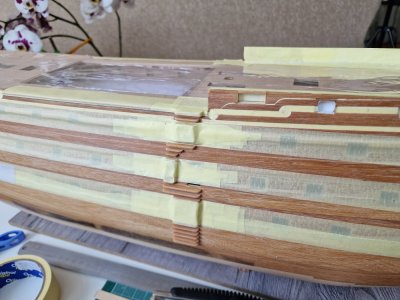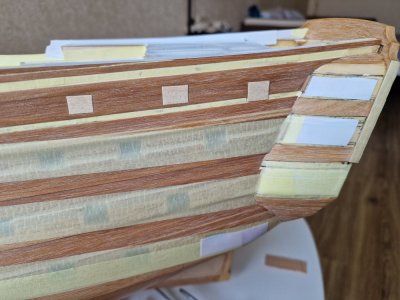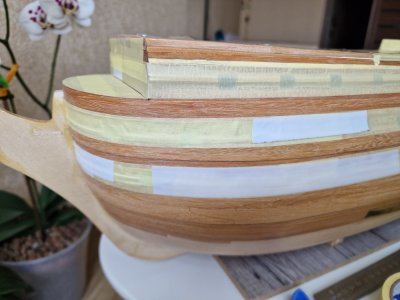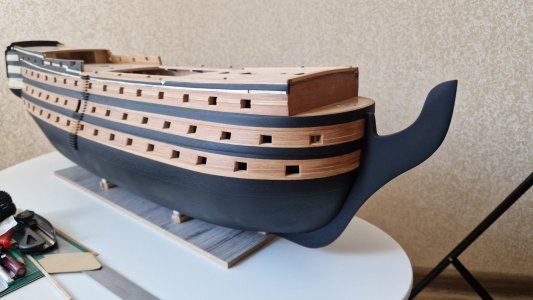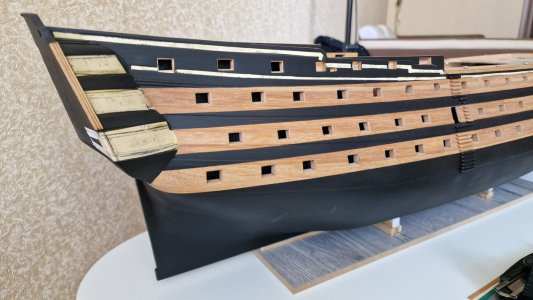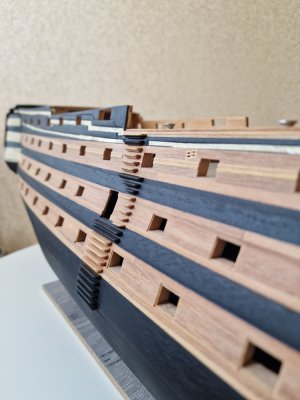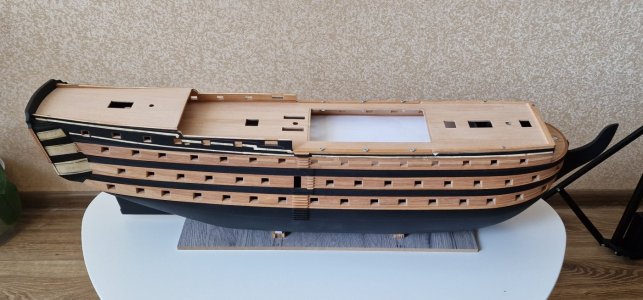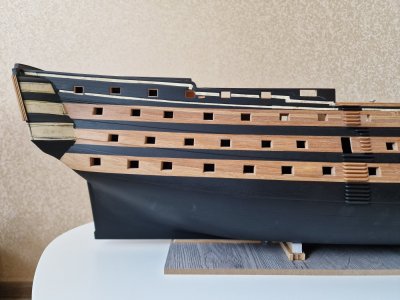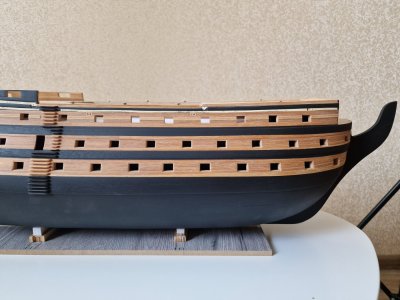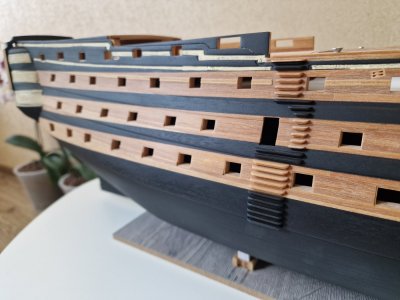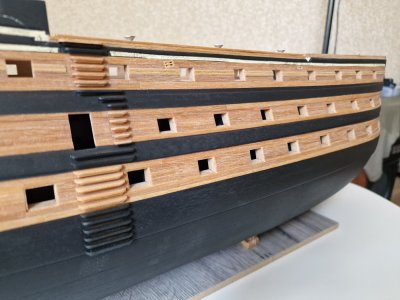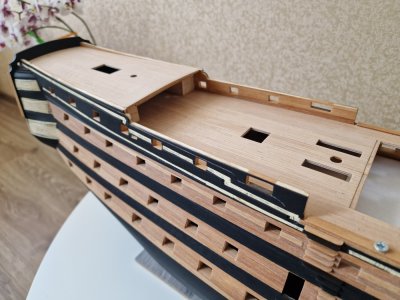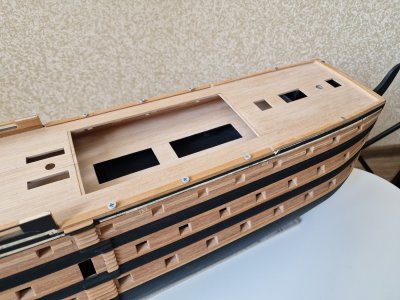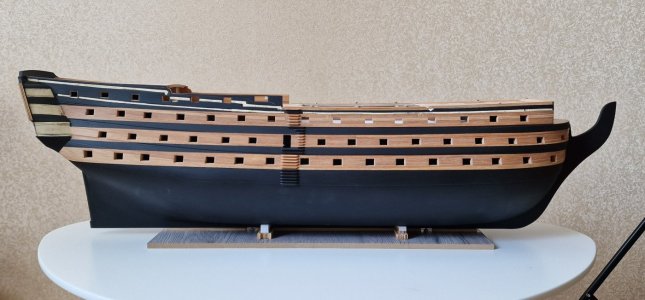07.2023
Bitumen Patina...
Attention! I’d love to hear your thoughts. What do you think of this method, and how do you feel about the result after the bitumen coating? How does it look on the deck and on the sides?
Please share your opinions in the comments, and thanks in advance!
After it oil fully dried, I decided to try applying a bitumen coating right away. Based on Shevelev's recommendation, I used this one.
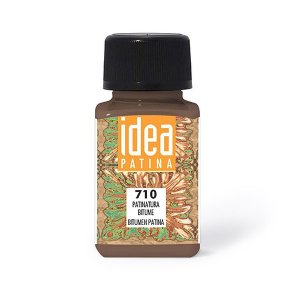
It needs to be diluted with white spirit (though I didn’t use that because of the strong smell, instead, I used an odorless artist-grade paint thinner, and there's no difference between them). I diluted it by eye, roughly 1:10. I’ll do some tests before the final coating and specify exact proportions then. The application method is simple: one brush is used to apply the diluted bitumen, while a second, dry brush is immediately used to spread and remove most of the blackness, leaving bitumen only in the crevices and seams. This method ensures an even application.
I also noticed that before the bitumen has fully dried, you can almost completely remove it with a clean thinner. It may remain in some deeper spots, but overall, the coating will be almost gone. This is only true for pre-oiled surfaces. On dry wood, the bitumen will absorb deeply, which is not what you want. So, if you apply it and after a few minutes realize the surface is too dark, you can wipe it off from oiled wood. However, if too much time passes, the bitumen won’t come off.
As a side note, after a year, the coating remains very stable—it can’t be removed by wiping, only by sanding.
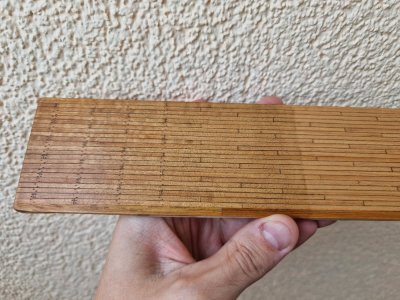
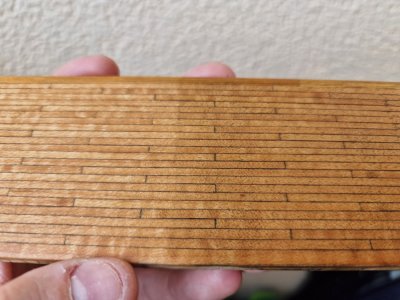
I also applied bitumen to the mock-up of the ship's side. I won’t spoil my own opinion just yet. I’m curious to hear what you think of the result. I've realized a lot through this process, but I’ll share my conclusions later after hearing your feedback!
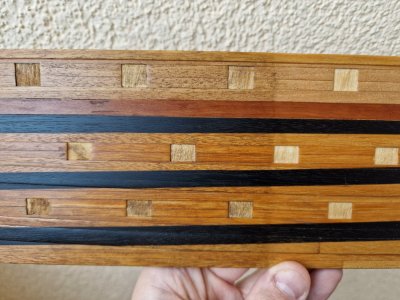
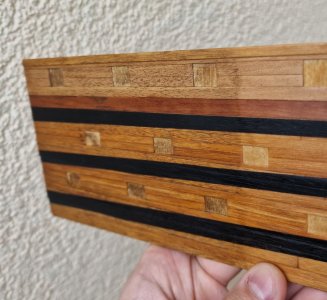
*Don't pay attention to the completely black section on the right. It's just a test.
Comparing the samples with the hull, it's still hard to imagine how everything will look in the end, even though there will be many details added to the hull. In short, I will return to this topic later, but for now, I’m looking forward to your feedback.
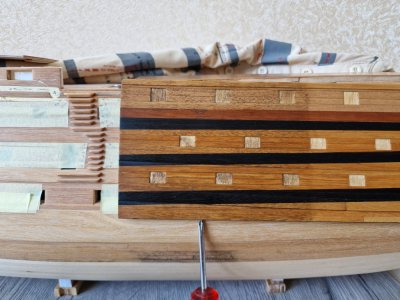
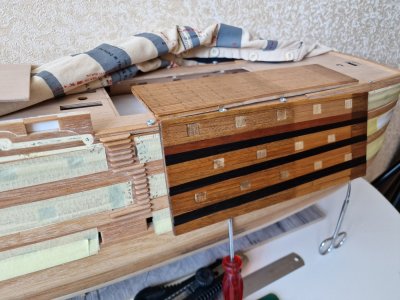

...
Bitumen Patina...
Attention! I’d love to hear your thoughts. What do you think of this method, and how do you feel about the result after the bitumen coating? How does it look on the deck and on the sides?
Please share your opinions in the comments, and thanks in advance!
After it oil fully dried, I decided to try applying a bitumen coating right away. Based on Shevelev's recommendation, I used this one.

It needs to be diluted with white spirit (though I didn’t use that because of the strong smell, instead, I used an odorless artist-grade paint thinner, and there's no difference between them). I diluted it by eye, roughly 1:10. I’ll do some tests before the final coating and specify exact proportions then. The application method is simple: one brush is used to apply the diluted bitumen, while a second, dry brush is immediately used to spread and remove most of the blackness, leaving bitumen only in the crevices and seams. This method ensures an even application.
I also noticed that before the bitumen has fully dried, you can almost completely remove it with a clean thinner. It may remain in some deeper spots, but overall, the coating will be almost gone. This is only true for pre-oiled surfaces. On dry wood, the bitumen will absorb deeply, which is not what you want. So, if you apply it and after a few minutes realize the surface is too dark, you can wipe it off from oiled wood. However, if too much time passes, the bitumen won’t come off.
As a side note, after a year, the coating remains very stable—it can’t be removed by wiping, only by sanding.


I also applied bitumen to the mock-up of the ship's side. I won’t spoil my own opinion just yet. I’m curious to hear what you think of the result. I've realized a lot through this process, but I’ll share my conclusions later after hearing your feedback!


*Don't pay attention to the completely black section on the right. It's just a test.
Comparing the samples with the hull, it's still hard to imagine how everything will look in the end, even though there will be many details added to the hull. In short, I will return to this topic later, but for now, I’m looking forward to your feedback.



...
Last edited:





 I'll say that I, too, like the antique look of wood, but I'm curious to hear SoS's opinion.
I'll say that I, too, like the antique look of wood, but I'm curious to hear SoS's opinion.




